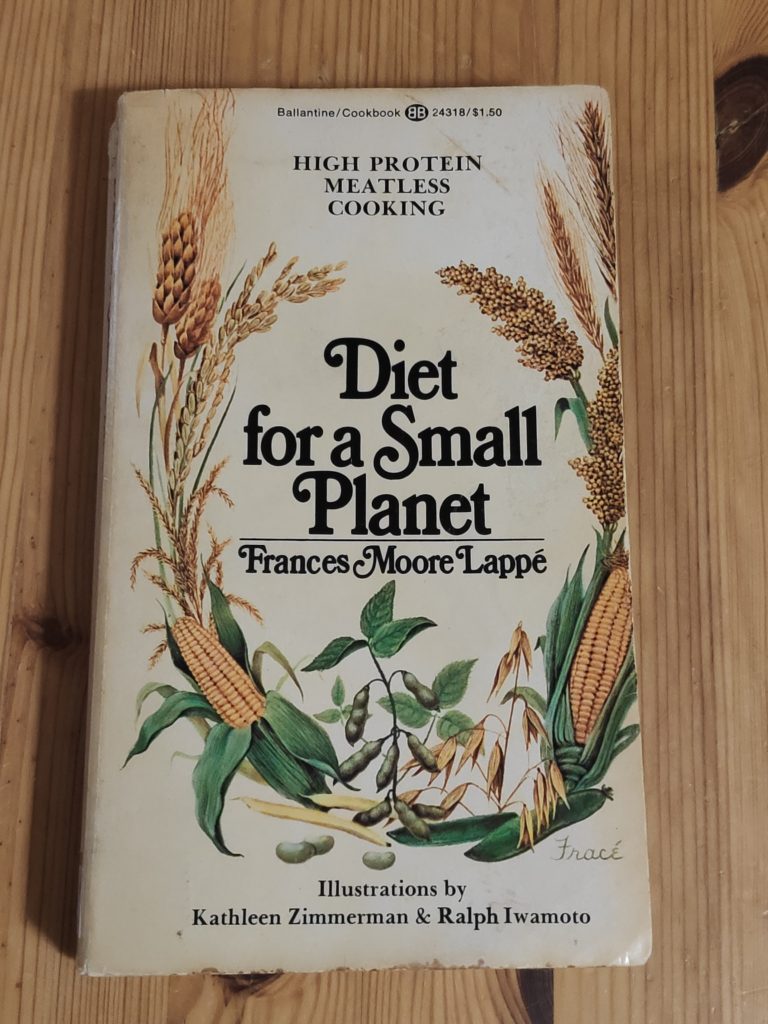After watching a program from Norwegian television (NRK) called Line fikser maten (Line makes food), I am even more convinced that cutting out meat and fish from our diet is good for both my body and the planet.
I first became aware of the problems caused by the consumption of meat when reading, Diet for a Small Planet, back in the 1970s. The author, Frances Moore Lappé, was concerned that eating meat was not sustainable on our planet and she showed how one could use plant products to supply the protein we humans need to consume. She showed how to combine foods to create good nutrition and give enough protein on a daily basis. She also provided lots of recipes so that one could get started with creating a new healthier diet.

Already at that time, I went over to a diet that used proteins from plant products and reduced my intake of meat, fish and poultry. It has since been shown that one doesn’t need to complement foods in the way that Lappé suggested to get adequate protein, though one should still think carefully about which types of foods should be eaten during the day.
In 1980, my husband and I moved to Norway and had very little money to live on. We lived on the coast, so fresh fish was affordable, but meat was not. We rarely ate meat, except for the occasional ground beef. Poultry was also not nearly so common back then and not particularly cheap, at least for our income level. A wide variety of legumes was not available either, so we lived on quite a restricted diet. I never felt that we had poor nutrition though I do remember trying to buy everything on sale, especially canned goods.
Once we started working in Norway, and our income improved we also started eating more meat and poultry. The cost of meat became relatively cheaper and certainly poultry became cheaper and easier to get hold of. Over the last forty years, the availability of a variety of food has improved and imported food has became much more common.
Now we eat a wide variety of legumes, most of which are imported from Asian countries. Though I do prefer to buy vegetables that are grown locally, not everything is in season year round. As an example I was able to buy the first locally produced tomatoes today and they haven’t been available for several months. Much of our fresh produce comes from Spain, Israel or South Africa.
We live in an agricultural area, surrounded by farms. We have an egg farm as one of our nearest neighbors and we walk up there to buy farm fresh eggs. Some of the farms nearby are meat producers, either beef or pork. Potatoes, carrots and other vegetables may come from neighboring communities. But bananas, oranges and grapefruit are still not grown in Norway. However with climate change and the increasing use of greenhouses to produce plants, there may come a change in what is locally grown in the future.
